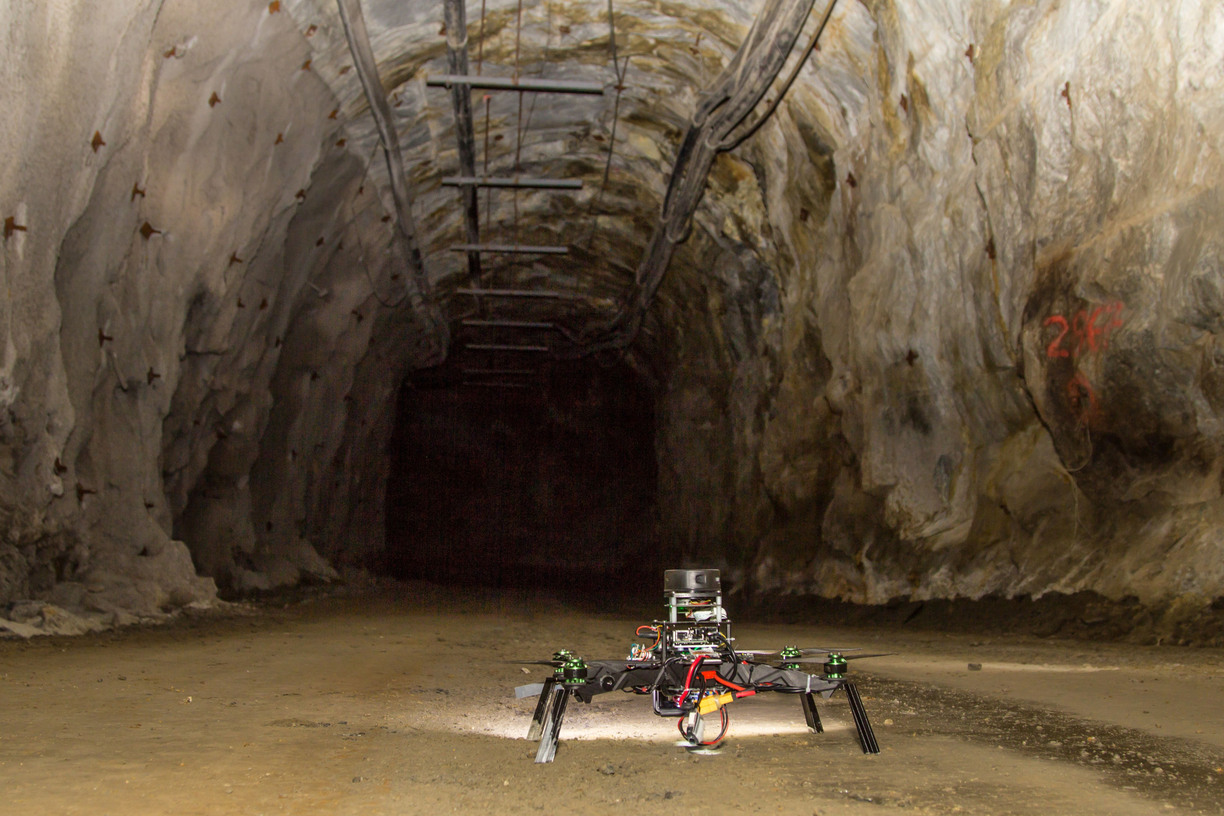
4 June 2019
Prestigious Collaboration with NASA/JPL in Space Robotics and AI
NASA/Jet Propulsion Laboratory and the Robotics Team at Luleå University of Technology has started a long-term collaboration on drones for autonomous aerial planetary exploration.
– This is a great honor and a prestigious cooperation for our Robotics Team, as well as for Luleå University of Technology. We get the opportunity to perform basic research in Robotics and AI, most probably with the best research organization in the world, well known for its pioneering activities in Space exploration, says George Nikolakopoulos, Professor of Robotics and Automation and Head of the Robotics Team at Luleå university of Technology.
It was the Jet Propulsion Laboratory in Pasadena, California, that initiated the collaboration with the Robotics team. This since the team has a solid experience in the area of Autonomous Field Robotics and AI, and is among the first in the world to have demonstrated advanced concepts of AI based navigation of autonomous drones in mining, applications that can be directly transferred to aerial planetary exploration. The unknown planetary environments are characterized by hazardous and difficult to navigate unknown areas, with potential networks of cages and tunnels, as well as large voids that are setting new directions to robotic AI. An enabled exploration that goes beyond the well performed and demonstrated planetary exploration with semi-autonomous rovers.
Imagine the mission of exploring an unknown void area or a completely dark tunnel in an unknown planet where no prior information exists. In such an unknown and complex environment, the aerial robots are ideal machines to perform an autonomous exploration of the area by utilizing advanced concepts of AI that embed proper levels of autonomy in their task.
– These levels of AI are mainly focusing in the field of autonomous perception of the environment; ”what is around me and where am I”, obstacle avoidance; ”identify obstacles and dangerous areas and try to avoid them”, autonomous path planning, autonomous reasoning and overall mission planning and reconfiguration, says George Nikolakopoulos.
Cutting edge research
In such demanding environments, where autonomy is the key aspect, Luleå University of Technology is pushing the limits of Applied AI in Robotics by trying to demonstrate advanced and robust autonomous robotic operations for aerial planetary exploration.
– Many research groups around the world have managed to fly autonomous drones successfully indoors in labs. However, there is a limited number of robotics research groups that have the capability and knowledge to fly outside the labs, in the field as we call it, and narrow the gap between theory and the real world.
As an example, in the mining sector the Robotics Group has successfully demonstrated the concept of a full autonomous mining tunnel inspection, with advanced levels of AI based autonomy for environmental perception, reasoning and learning.
– These activities place us among the top groups in the world that have the scientific capability to present such results in the real world, says George Nikolakopoulos.
Among the world's best
As an outcome of this collaboration in the area of planetary exploration, the Robotics team was asked to join NASA’s team in the DARPA Subterranean Challenge, the most advanced and prestigious Robotics and AI competition in the world. Besides NASA, the team consists of the California Institute of Technology, Massachusetts Institute of Technology, and Korea Advanced Institute of Science and Technology. Except from Luleå University of Technology, only two other European universities are entering the competition, one from Switzerland and one from the Chehz Republic. Hence, it is a huge token of acknowledgement for the university’s Robotic Group to join the team and the competition.
– The competition puts Luleå University of Technology in a great situation in the field of Robotics and AI; we get to cooperate with some of the best research groups in the world. We get visibility and can make an impact on the Space and AI industry in Sweden, says George Nikolakopoulos that has also obtained a NASA affiliation.
– But most importantly, it gives our research group a lot of joy. It is difficult to describe the overall experience that we are gaining in the Robotics Team from this collaboration, a continuous source of knowledge, inspiration and worldwide research excellence that places our team, as well as the university, in the elite of Robotics and AI in Sweden and the world.
Luleå researcher already at JPL
Another early result from the collaboration between NASA/JPL and Luleå University of Technology, is that PhD student Christoforos Kanellakis, already is in California at the JPL, representing the Robotics team. There is a long plan for a continuous presence at JPL with follow up extended research visits and sabbaticals. Christoforos Kanellakis is working in the field of AI based robotic perception and control, which are the fundamental AI components for enabling an autonomous operation of drones, especially in unknown and harsh environments as in the case of aerial planetary exploration.
Published:
Updated:
